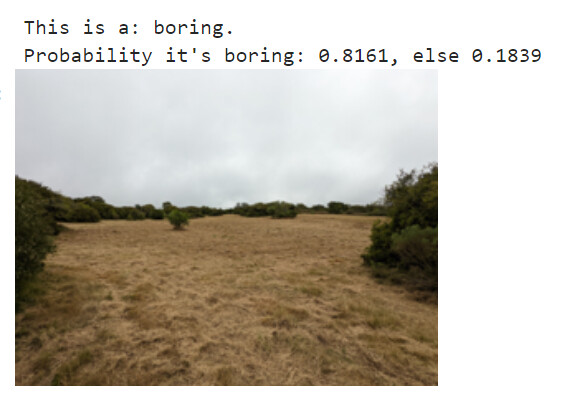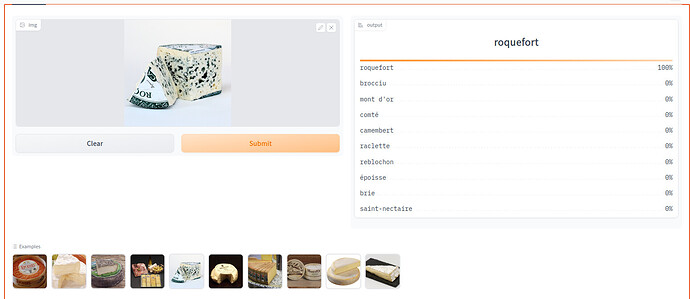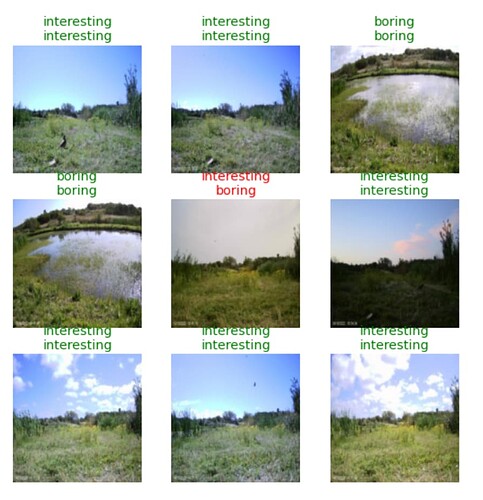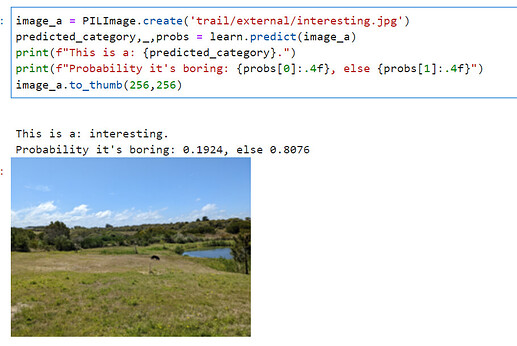Hello , i followed Setting Up Hugo + Cloudflare Pages - Julia Nickerson's Blog for setting up my blog. My blog needs a lot of tweaking and would like to share it once done but this should help you setup your own blog in few steps. Thanks to @jnick .
Thanks, this was helpful…
For lesson 1, I created a classifier that distinguished between birds, planes and supermen, inspired by this meme:
Following J’s advice, I also set up a blog to document my journey. I like Quarto because the notebooks look so clean. Also github pages is amazing. So happy with the results!
You can view the notebook here.
I already love the course for being so practical and encouraging building instead of passive learning! Thank you Jeremy and the whole fastai team!
Looks lovely!
I am trying to setup a blog with Quarto. The output I want is very similar to what you have done. I am following the “Creating A blog” guide on Quarto’s site but I am having trouble publishing the blog. I was wondering how you did it, specially the publishing part of the blog.
Also I do not have a local GPU connected to my PC. That will be a barrier right?
Thanks in advance.
Thank you!
It took me a bit of time to figure out how to publish. Mostly I followed the instructions on this page from the quarto documentation.
You don’t need a GPU in your PC. I ran the notebook in Colab, then downloaded it (File → Download → Download .ipynb) and just dropped the downloaded nb into my quarto blog directory. Quarto does the rest. It’s really simple!
I’ll try and write a blog post documenting the whole process (otherwise i’m sure i’ll forget and have to do all the work from scratch again ![]() ). I’ll let you know when that is ready.
). I’ll let you know when that is ready.
Hopefully this helps!
Great. Will look forward to it.
I think Stable Diffusion, esp now, has a lot of potential if you want to have it produce very specific types of photos. The img2img feature seems very promising if you feed it a reasonable prompt while generating images without any reference image (just text) seems hit or miss. Of course, I think having an image classifier in the pipeline to further filter out “bad” images (like images of people with missing or multiple limbs) would supercharge it even more.
Jeremy seems to have something on it in the latest Lesson 9 lecture which I’m gonna take a look at soon.
I have just published my cheese classifier to huggingface. Cheeses - a Hugging Face Space by Guillaume63
For the moment only 10 kind of cheese are recognized.
But I would like to train on the 400 different ones we have in France
Good to see Époisses there - you better add Pont-l’Évêque and Langres too now! ![]()
Would be cool to extend with an artificial nose. https://www.microsoft.com/en-us/ai/ai-lab-artificial-nose
I’m sure it would do better than the poor old Cheeseoid robot.![]()
Hi again!
I wrote out the process i used to create the blog.
Let me know if there’s anything there that doesn’t make sense.
Hope it helps!
This is perfect! Thanks for sharing this. I will try to set it up and let you know.
Fantastic! Thanks so much for sharing.
Just finished playing with lesson 1 notebooks, and I realized I had a real use case for what I learned so far: I’ve recently installed a trail camera near where I live, and going through literally thousands of photos each week to see if there’s an animal got boring really fast. I tried my luck with training a model to recognize when photos were interesting (ie: they contain an animal), and got pretty good results!
The model was so good it even found animals I had missed!
Looking forward to trying the model with a new batch of photos next time I go look for the camera’s photos!
extra:
I then tried the model with two pictures outside of the dataset: photos I took myself with my phone. The results were correct! (in one case it detected my dog, in the other, no animals were present)
----

I’m really excited to get results on my first week, looking forward to continuing to improve the model as I learn more stuff!! Amazing course ![]()
extra 2:
For some reason, I couldn’t get ImageClassifierCleaner to work on Paperspace. When I changed values with the dropdown, nothing changed on the interface. Any ideas on what I could be doing wrong? I tried it both on the “vanilla” JupyterLab interface and on the modern Paperspace interface with no luck. Thanks in advance!
update! Nevermind, I fixed it by adding import ipywidgets as widgets, as @jeffbiss explains here: Name 'widgets' is not defined & taking lot of time to run the fastbook ch-1 on colab - #8 by jeffbiss
Yayyyyyyyyy…I did it ![]() !
!
Here it is. Thanks so much. The guide was so smooth.
PS: Some pages are empty, yet to work on the content and other stuff, Will put on the main thread once it is done.
Thanks again ![]() .
.
Wow that looks amazing!
Great work!
I was just thinking of picking up a surface laptop. ![]()
Hi all ![]() !
!
I have created my website using Quarto. Here it is.
I am sharing my notes from it:
Few thoughts:
- Writing these notes have pushed me to complete the lesson 100%. I thought I had finished Lesson 1 in my “head” a few days ago. It was not until I started to write these notes, I realized some important bits were missing and I had not grasped it fully.
- I got stuck a lot in the whole process- issues with installing, Quarto, etc. I asked for help on the forums, (here and on Quarto’s). I was surprised to find how supporting the community is. I heard Jeremy say this, but I experienced it myself. It developed a deep sense of gratitude towards all of them. I intend to give back by helping others a few months from now.
Special thanks to @afshan22 for helping in publishing the website. This blog helped me!
This is really cool ![]() I had heard several people talking about using nbdev and Quarto to blog and to show results from experiments etc. but it’s great to see that in action. I’m kind of leaning towards trying this myself and/or somehow integrating this approach with my existing blog. Seeing your blog made me want to look into this further …
I had heard several people talking about using nbdev and Quarto to blog and to show results from experiments etc. but it’s great to see that in action. I’m kind of leaning towards trying this myself and/or somehow integrating this approach with my existing blog. Seeing your blog made me want to look into this further …
Also, kudos on wanting to pass it on. Can’t say how much I appreciate that attitude!




